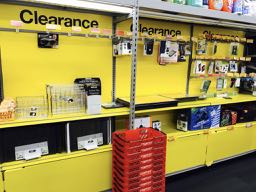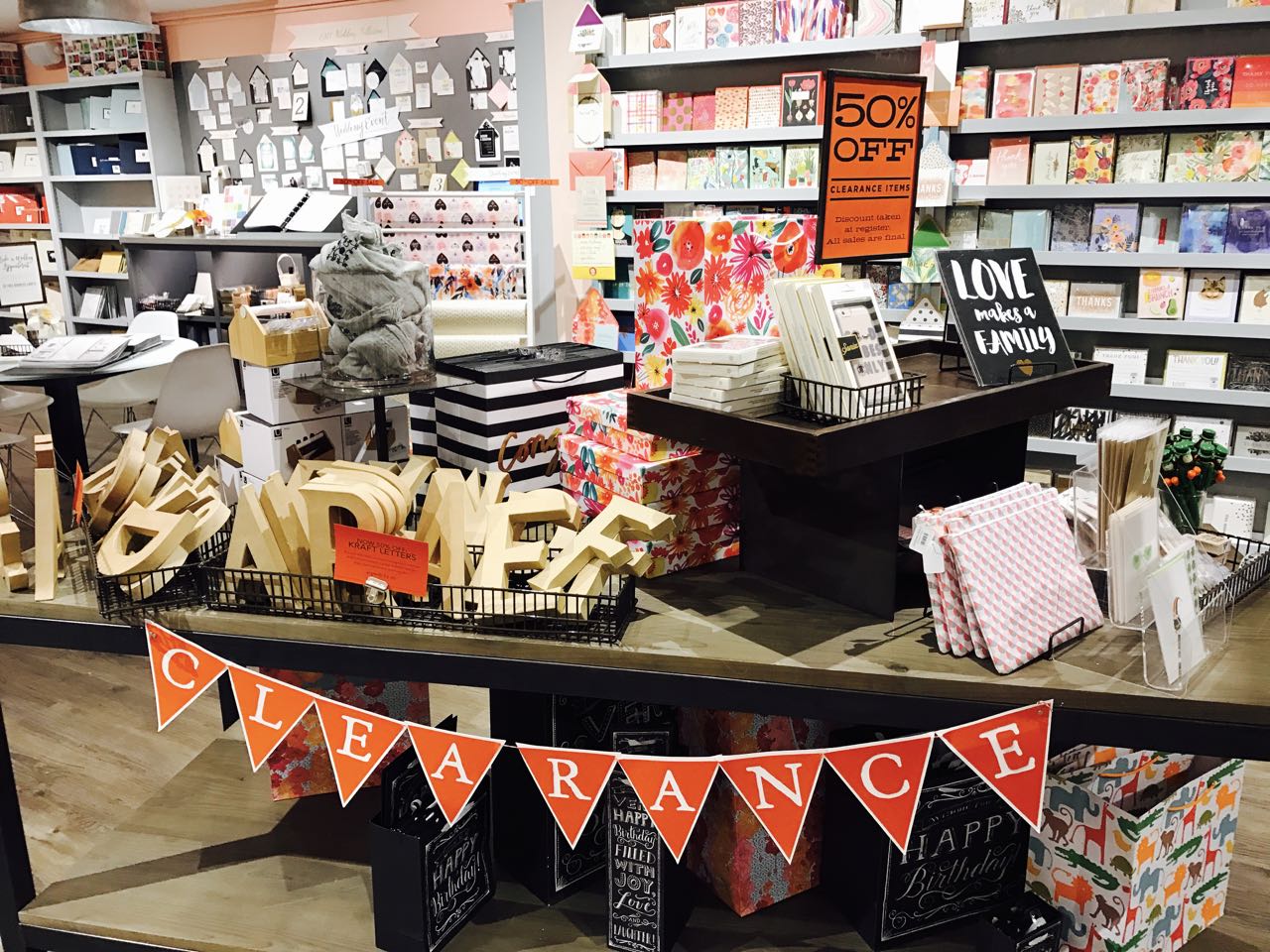 National retailers in the US are terrific at managing quitting inventory. Most have a structured approach to what they call clearance lines. This photo is from a Staples store I visited last week. I saw similar clearance locations in each of the six Staples stores I visited in two states.
National retailers in the US are terrific at managing quitting inventory. Most have a structured approach to what they call clearance lines. This photo is from a Staples store I visited last week. I saw similar clearance locations in each of the six Staples stores I visited in two states.
Having space set aside, permanently, for clearance lines, ensuring it is visually separated from your usual displays, calling it out with a bold colour and placing product for a clearance look – i.e. not too pretty.
I can see this working in all sorts of businesses, from the traditional newsagency through to those with a focus on high-end premium retail. You would set aside the space appropriate two out space situation and your inventory quitting strategy. You would create the clearance offer appropriate to your type of business.
This is a better approach than putting SALE signs up here and there. A fixed clearance location provides customers with certainty. It shows you are serious and consistent in your approach. This encourages confidence.
Here is an example of a different approach, something more refined and professional:
This photo is from a US card and gift shop. I took the photo a few months ago while on a retail tour.
I like both approaches I have shared here. Each has their place. While I am more likely to use the second in my businesses, the first would be okay in the right nook of the business.
The key is to have a clearance location permanently set aside and to signpost th8is professionally.
The goal is to sell through clearance stock faster than you would if you did not take the structured approach I am writing about here.
When it comes to quitting stock, the sooner the better. hence the need for a clear and disciplined outcome-focussed approach.
I hope this is useful to retailers as they contemplate what to do with stock they are exiting from their businesses.
